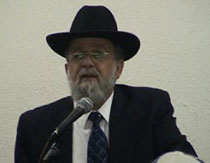Beit Midrash
- Torah Portion and Tanach
- Bamidbar
- Bamidbar
At the first census, the shekalim were needed in order to protect the Jewish people from the ayin hara, the evil eye that would have been aroused by a direct count. At this census, however, there was no longer any reason to fear an ayin hara.
The Kli Yakar explains the difference with the following example. When a pauper is seen holding a wallet full of bills, he will activate the ayin hara, for such an unusual sight is likely to stir the jealousy of others. By contrast, the sight of a wealthy individual holding an equal, or even a far greater sum, is simply unremarkable, arousing no undue interest.
The first census was taken a short time after the nation - enslaved and persecuted for generations - were miraculously redeemed from their bondage. Precious little could have been expected of such a weakened nation, and therefore there was reason to fear the ayin hara, when the results of this first census would become known.
By the second census, Bnei Yisrael s greatness had already been established, and was now a regular 'part of the scenery'. In such circumstances, a direct count would not arouse the ayin hara, as their great number would surprise no one.
Following the Holocaust, there were those who feared lest the new Jewish state prove to be too successful...
many felt reluctant to express their true emotional ties to their national homeland.
Today, there is no longer reason to fear such an ayin hara, as , baruch hashem, the strength of our land is known to all. We can now acknowledge - openly and unreservedly - both our pride over its accomplishments, as well as our concern for its fate, and our desire to join our people in the chosen land.



















